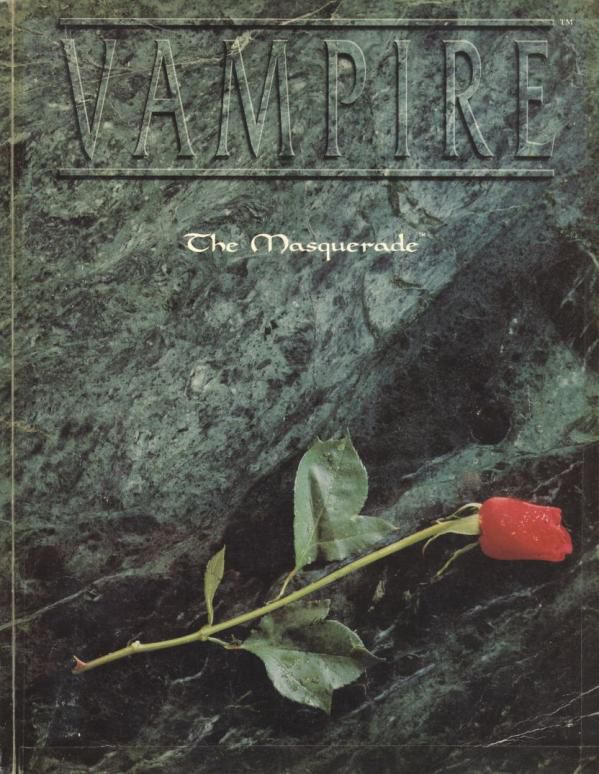
Let's Read Vampire: The Masquerade, 1st Edition, Part Four
Chapter Six: Drama
This chapter expands on the very simplified rules we saw a few chapters earlier. Right away, it talks about breaking your game down into scenes, advice which shows up in just about every game these days. An interesting thing VTM does is suggest running action scenes—even ones without combat—in a structured way with each character taking turns resolving their actions.
This is followed by systems for various common actions—physical and social. Combat is just stuck in the middle of the section on physical actions. Combat is … different. There's no initiative system; actions are described and resolved in whatever order you like. In hand-to-hand combat, it's assumed that attackers pair off. If you are punching someone, it's assumed that they are punching or biting you back. And whoever wins the opposed roll does damage to the other. In a firefight, you just roll to shoot whoever you'd like. Damage and "soak" rolls work like in later Storyteller games, but the difference in how attacks work is intriguing.
The chapter concludes with an example of play that includes a fiction description on the left and rules explanation on the right. I love when games include things like this. I wish more designers were inspired by it's inclusion here.
Chapter Seven: Setting
We expand on the world here, the so-called Gothic-Punk setting that would continue for 13 years. We learn of the social structure of vampires, the elders, princes, and such. The Traditions are listed and then explained in detail. The Camarilla is introduced as the overarching "government" of Kindred, contrasted with the leaderless Anarchs and the bloodthirsty, fanatic Sabbat. And generation is further explored as the distance a vampire descends from the progenitor Caine.
Antagonists are next, and stats are given for police and government agents, the Inquisition, and an order of occult scholars called the Arcanum. Vampires are often their own worst enemies, so we get stats for Kindred at various ages. And the other WoD games to come are hinted at with brief looks at Lupines (as the Kindred know the werewolves who stalk the land between cities) and magi.
The chapter concludes with the obligatory lexicons of modern, old form, and vulgar terminology.
Next time, we'll finish up the last couple chapters of the book and reflect on VTM as a whole.